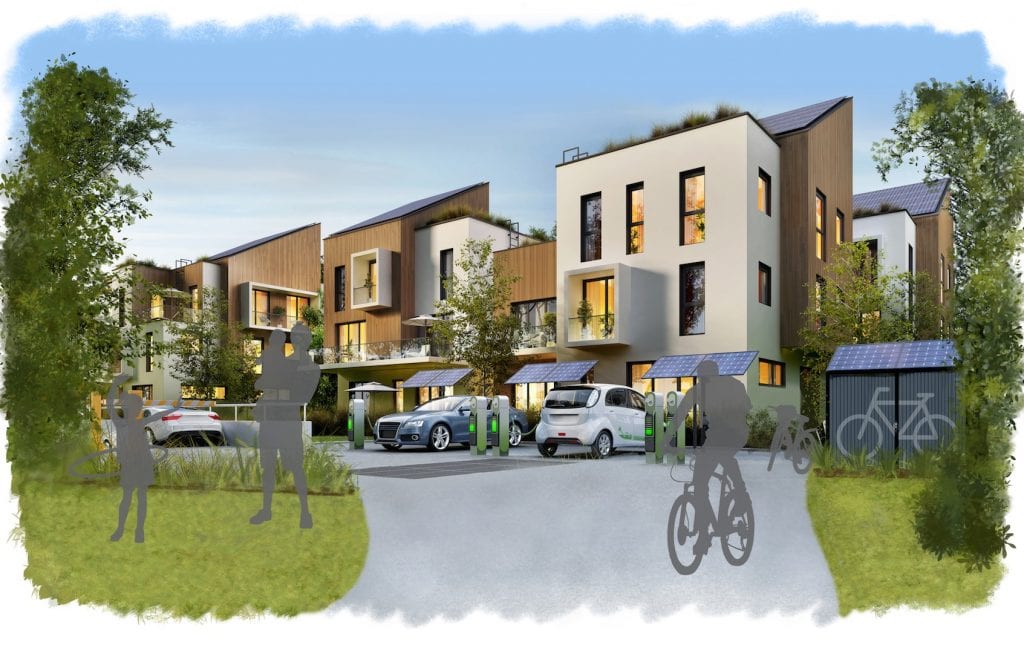
The loss in global biodiversity and protection of green spaces has been rising up the agenda for building owners, particularly from Environmental Social Governance (ESG) reporting. ESG reporting involves demonstrating environmental credibility to banks and loan providers and in the future may be the key to securing loans and investment. Unlike global greenhouse gas emissions, biodiversity lacks a universal measurement which makes reporting on biodiversity and setting targets a complex area. Biodiversity can also be viewed as a solution of climate change and may be vital to achieving net zero carbon emissions.
The importance of biodiversity to landlords or building owners
 Building owners have an opportunity to improve biodiversity in the UK to achieve the net gain set out in the UK Government’s Environment Bill (2020). The importance of biodiversity and green spaces can be discussed in 4 broad areas:
Building owners have an opportunity to improve biodiversity in the UK to achieve the net gain set out in the UK Government’s Environment Bill (2020). The importance of biodiversity and green spaces can be discussed in 4 broad areas:
- Health – biodiversity boosts both physical and mental health, as well as the wellbeing of residents and colleagues; other health benefits include the avoidance of infectious diseases and advancements of medicine.
- Food and nutrition – biodiversity not only protects agriculture by improving resilience, but also increases the nutritional value of foods and improves food security.
- Combatting climate change – increased biodiversity and green spaces helps to improve flood attenuation and reduces the risk of overheating, improves water cycle sustainability and absorbs carbon from the atmosphere.
- Cultural and economic value – biodiversity enhances culture and identity, is used for recreational activities and can be a form of bio-energy.
These reasons represent the importance of protecting biodiversity and green spaces.
What are others doing to help measure biodiversity?
The Science Based Targets Network (SBTN) initiative are working on setting targets for nature covering freshwater, biodiversity, land and oceans [1]. These are expected to be launched in 2022. The SBTN for nature will aim to avoid biodiversity loss by addressing the causes and restore ecosystems. The SBTN aim to ensure future measures are impactful, cost-effective and as easy as possible to implement. Whilst this currently doesn’t give any clear guidance on reporting biodiversity, it is one to look out for in the future.
Elsewhere, a Taskforce on Nature-related Financial Disclosures has been set up to overcome the gaps preventing financial institutions from assessing the risks of investments. Additionally, the UK Government is expected to announce a “legally-binding target for 2030 to drive action to halt the decline of nature and wildlife” [2]. In the meantime, there are a number of no-regret options for building owners. These include planting higher density biomass in available areas, wildflower planting and ensuring ecological enhancements are implemented at new developments.
How SHIFT addresses biodiversity:
- We have recently updated our SHIFT biodiversity metric so that the input data remains the same but the output now estimates biomass above ground. This takes into consideration the quality and density of biomass and will also be used in our ESG reports.
- We are also exploring ways that satellites can be used to measure biodiversity for building owners – to find out more or if you’d like to get involved please get in touch here.
- To find out more about the benefits biodiversity and green spaces hold, why not read our blog on tree planting and offsetting carbon.
[1] The Science Based Targets Network (SBTN).
